Cougars on the air
Pop-Tarts Bowl
No. 12 BYU (11-2) vs. No. 22 Georgia Tech (9-3)
- Saturday, Dec. 27, 1:30 p.m. MST
- Orlando, Florida
- TV: ABC
- Radio: 102.7 FM/1160 AM
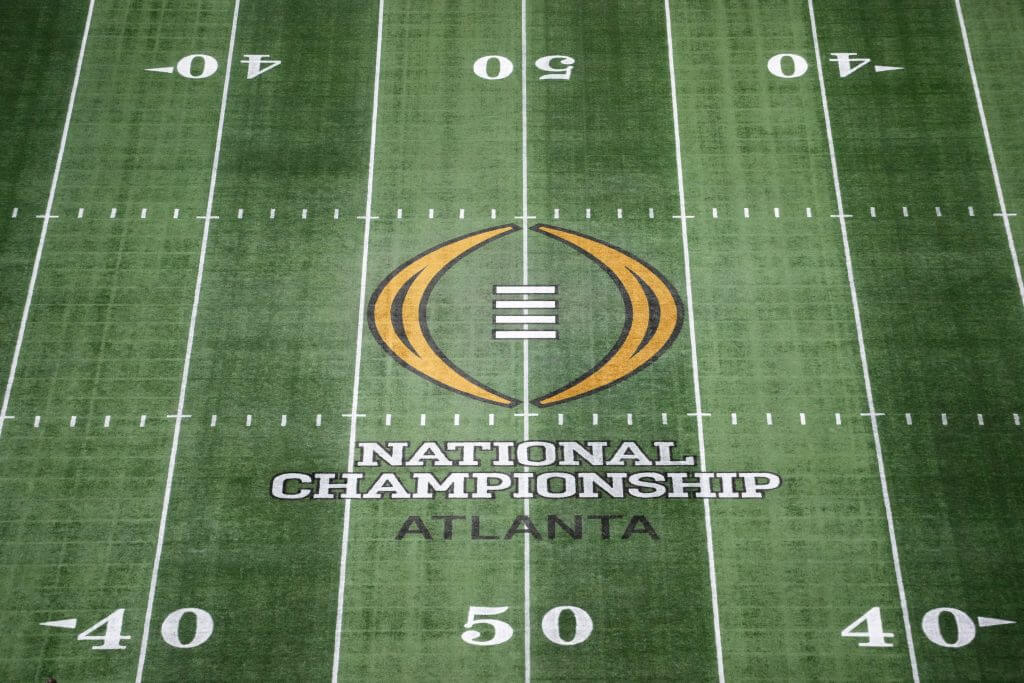


The closest Bryan Seeley has been to working in college sports was spending 40 hours a week covering them for the Daily Princetonian during his days as an undergraduate at the Ivy League school.
Now, the longtime head of investigations for Major League Baseball is about to step into a brand-new role, leading a brand-new organization, which could make him one of the most powerful people in college sports.
Advertisement
On Friday night, Seeley, 46, was named the chief executive officer of the College Sports Commission, the enforcement agency launched by the wealthiest and most powerful conferences to oversee and implement the system that will allow direct payments from NCAA schools to athletes for the first time.
The formal announcement of the CSC and Seeley’s hiring came about two hours after a federal judge approved the $2.8 billion settlement of a trio of antitrust lawsuits facing the NCAA and major college conferences.
A self-described lifelong college sports fan, Seeley brings more than a decade of experience in compliance, enforcement, investigations and policy-making at MLB, along with eight years with the U.S. Department of Justice and a law degree from Harvard.
He said he was drawn to the job by the opportunity to shepherd college sports through a period of transition and into a new era.
“I view this as an area where I can really add value,” Seeley told The Athletic on Sunday in his first interview since a press release announced his hiring.
College sports has a long history of inconsistent enforcement and skirting rules to gain a competitive advantage. The NCAA will still oversee rules related to academics and eligibility, but systems installed to regulate the revenue-sharing cap schools must adhere to, evaluate fair-market value of name, image and likeness deals between athletes and third parties and monitor roster limits will be under the purview of Seeley and the CSC.
He will report to a board made up of the power conference commissioners.
“I think this is a good, new starting point. So whatever existed beforehand does not need to be what exists going forward,” Seeley said. “Culture doesn’t change overnight. I don’t expect that to happen overnight, but I do think that the schools that have signed on to the settlement want rules and want rules to be enforced. Otherwise they wouldn’t have signed on to the settlement. I think student-athletes want a different system. So I think there is a desire for rules enforcement. There’s a desire for transparency.”
Advertisement
Seeley doesn’t have an official start date, but there is no time to waste. Universities can begin directly sharing revenue with college athletes starting July 1. The clearinghouse for evaluating third-party NIL deals for athletes worth at least $600, run by accounting firm Deloitte, goes live Wednesday.
Schools in power conferences are expected to sign formal agreements to abide by rulings made by Seeley and outside arbitrators.
“I haven’t been given assurances of anything, but I do know from my read on this, there is buy-in from the institutions,” Seeley said.
Seeley built the investigations unit at MLB, staffed with lawyers and former law enforcement officers.
“During his time at MLB, Bryan demonstrated unparalleled integrity, a commitment to fairness, and the ability to navigate complex challenges with precision and care,” Major League Baseball commissioner Rob Manfred said in a statement. “I have no doubt he will bring the same level of excellence to the College Sports Commission. College sports will greatly benefit from Bryan’s expertise and vision.”
Seeley’s first task at CSC is to again build a staff.
“These are going to be more private-sector investigations, right?” Seeley said. “We don’t have subpoena power. We don’t have search-warrant power. I’ve operated in that system for over a decade, so I’m well-suited to continue to do that with college sports.”
He added, “I think I’m one of the few people in the country who’s probably led investigations into salary-cap circumvention, and so in terms of the subject matter, at least for part of this, I have a lot of experience.”
MLB teams do not operate under a hard salary cap, but there is one for the league’s international amateur talent acquisition system.
One of the most prominent cases Seeley investigated came in 2017, when the Atlanta Braves were found to have circumvented international amateur signing rules over a three-year period. Braves general manager John Coppolella received a five-year ban for his role in the violations. In a separate investigation, Seeley’s group found the Boston Red Sox had also cheated in the international amateur market. Punishment in that case was handed down in 2016.
Advertisement
While the highest levels of college sports are becoming more similar to professional sports, Seeley pushed back on the notion that the power conferences are trying to create another pro league.
“College sports is its own unique thing, and what makes college sports great needs to remain,” Seeley said. “Some of the system we’re going to bring for enforcement is a system that has been used in the pro sports world, but it’s been used in other worlds, too. … But I don’t view this as the professionalization of college sports. Working with schools and working with student-athletes is going to be quite different than working with professional sports teams and professional athletes.”
— The Athletic’s Evan Drellich contributed reporting.
(Photo: Phil Didion / Imagn Images)
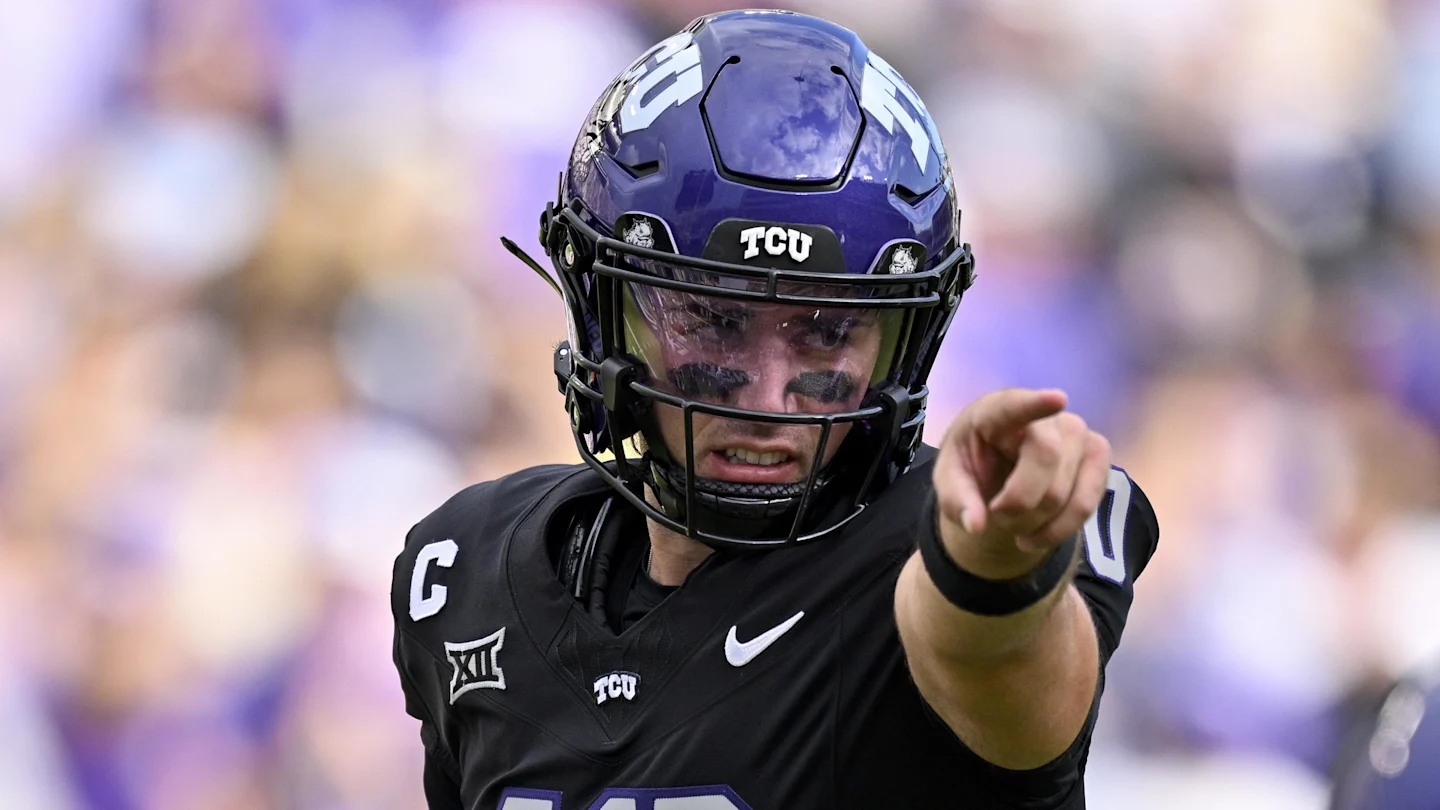
The NCAA Transfer Portal claimed another big name on Thursday night.
TCU star quarterback Josh Hoover has announced he intends to move on from the program. Hoover spent the last four seasons with the Horned Frogs, taking over as the starter midway through the 2023 campaign and putting up big numbers in each of the last two years.
In 36 career games, Hoover has completed 771/1183 passes for 9,629 yards with 71 touchdowns to 33 interceptions. He added eight more scores on the ground. There’s a very real likelihood that Hoover’s the most productive quarterback returning to the sport in 2026.
Hoover ranks in the top 5 in TCU program history in touchdown passes and total offense. He’s expected to be a coveted option in the portal.
Where are five landing spots that make sense for Hoover?

Back in the College Football Playoff with a different starter for the second consecutive season, Indiana has put together one of the most impressive runs in the sport since Curt Cignetti took over the program.
The undefeated Hoosiers produced their first Heisman Trophy winner in school history last weekend as star quarterback Fernando Mendoza ran away with the award. Mendoza has another season of eligibility remaining, but is projected to be a top selection in the 2026 NFL Draft.
Indiana has already been linked to Hoover, per CBS Sports’ Chris Hummer.

Miami has lived in the transfer portal over the past few years, investing plenty of time and money into building a contender for Mario Cristobal. The moves finally worked out in 2025 as a massive financial commitment to secure Carson Beck from Georgia helped power the Hurricanes to the playoffs.
Though the conclusion of the 2024 season was a disappointment, former Miami quarterback Cam Ward was developed into the No. 1 pick in the most recent NFL Draft. Beck will likely get a shot at the professional level as well.
With little proven depth on the roster, it makes sense to bring in another experienced quarterback like Hoover to keep the Hurricanes on the right track. Miami has proven it’s willing to pay up.

Oregon is a known quarterback factory, sending former stars such as Marcus Mariota and Justin Herbert to the NFL. That hasn’t changed since Dan Lanning took over the program in 2022.
The Ducks have had a quarterback drafted in back-to-back years, with Bo Nix going in the first round in 2024 and Dillon Gabriel being selected within the top-100 picks in 2025. Lanning could do it again next April with Dante Moore, who is nearing the end of a career year.
If Moore does leap to the professional level, Hoover would be a solid fit. Nix, Gabriel, and Moore all began their college careers at different schools and later transferred to Oregon, a similar path Hoover is embarking on.

Suiting up for a playoff contender is pretty cool. Having a chance to win championships and staying home in the process might be even cooler.
Texas Tech has firmly entrenched itself as a program to reckon with in the modern age of the sport. The Red Raiders have plenty of money, and they’ve shown they’re willing to use it to pull in elite talent from the transfer portal and high school ranks.
With Behren Morton exhausting his eligibility following the playoff run, Texas Tech has to decide if it wants to turn the program over to another transfer or a homegrown talent like Will Hammond.
Either way, Hoover is from Texas and he’s already in the state.

An outlier among four other programs that have a chance to win it all, Houston is on the come-up. The Cougars haven’t been shy about writing checks, evidenced by the program signing five-star quarterback Keisean Henderson during the Early Signing Period.
Redshirt junior starter Conner Weigman does have one season of eligibility remaining and has stated he intends to return next season. Decisions are quick to change in this era, so never say never.
Would Houston bring in Hoover while Henderson develops for a season? Or should the program stick with Weigman as a veteran leader for Henderson?
Weigman just joined the program as a transfer last year. He was fine, but unspectacular this fall, and an upgrade could help the Cougars break their ceiling.
• $45 million college football head coach reportedly offers Lane Kiffin unexpected role
• Paul Finebaum believes one SEC school is sticking by an ‘average’ head coach
• SEC football coach predicts major change after missing College Football Playoff
• Predicting landing spots for the Top 5 college football transfers (Dec. 17)

South Carolina Upstate Spartans (8-6) at Youngstown State Penguins (7-5, 2-1 Horizon League)
Youngstown, Ohio; Saturday, 1 p.m. EST
BOTTOM LINE: Youngstown State hosts South Carolina Upstate after Cris Carroll scored 31 points in Youngstown State’s 80-77 overtime loss to the Robert Morris Colonials.
The Penguins are 4-0 on their home court. Youngstown State scores 80.2 points and has outscored opponents by 10.9 points per game.
The Spartans are 2-5 on the road. South Carolina Upstate is fifth in the Big South scoring 79.6 points per game and is shooting 46.2%.
Youngstown State averages 10.4 made 3-pointers per game, 3.8 more made shots than the 6.6 per game South Carolina Upstate gives up. South Carolina Upstate has shot at a 46.2% rate from the field this season, 3.3 percentage points greater than the 42.9% shooting opponents of Youngstown State have averaged.
TOP PERFORMERS: Carroll averages 3.0 made 3-pointers per game for the Penguins, scoring 16.4 points while shooting 48.6% from beyond the arc. Rich Rolf is averaging 10.8 points over the last 10 games.
Mason Bendinger is scoring 16.1 points per game and averaging 3.1 rebounds for the Spartans. Carmelo Adkins is averaging 1.9 made 3-pointers over the last 10 games.
LAST 10 GAMES: Penguins: 6-4, averaging 81.3 points, 33.6 rebounds, 15.2 assists, 9.1 steals and 3.3 blocks per game while shooting 49.6% from the field. Their opponents have averaged 67.7 points per game.
Spartans: 5-5, averaging 75.4 points, 33.5 rebounds, 14.1 assists, 6.1 steals and 5.0 blocks per game while shooting 43.9% from the field. Their opponents have averaged 73.2 points.
___
The Associated Press created this story using technology provided by Data Skrive and data from Sportradar.
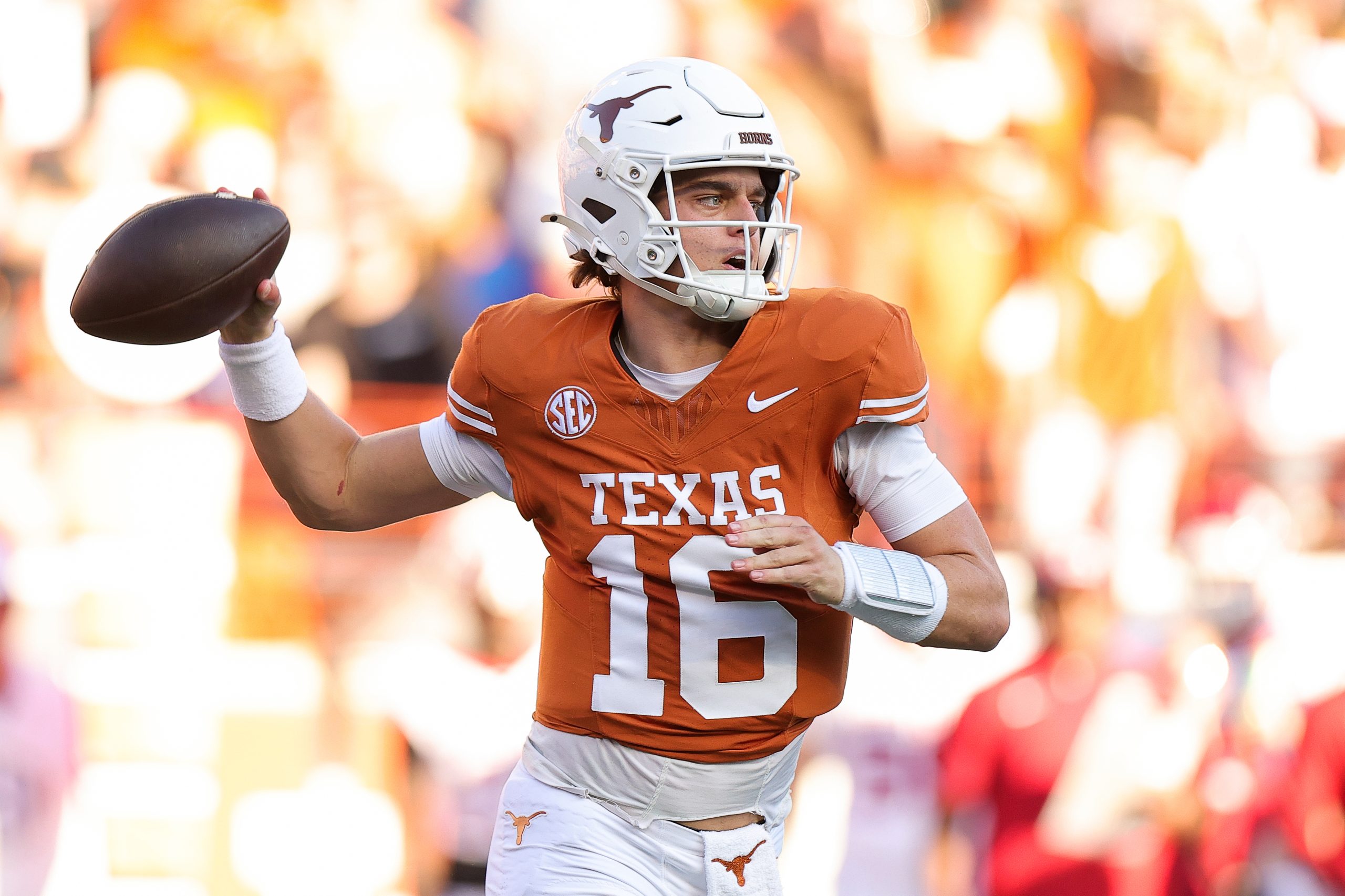
In a college football world where NIL numbers keep climbing, Arch Manning is going the other way.
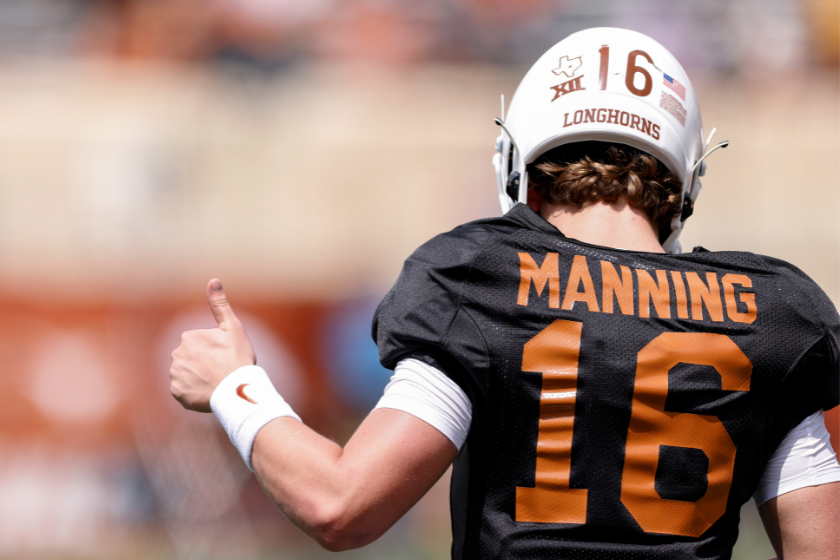
Photo by Tim Warner/Getty Images
The Texas quarterback has agreed to take a reduced share from the Longhorns’ revenue-sharing pool for the 2026 season, according to Justin Wells of Inside Texas. Manning was entitled to a full portion of the program’s revenue cap but opted to scale it back in an effort to give Texas more flexibility to strengthen its roster.
It is a move that stands out in the current landscape. It is also one Manning can afford to make.
Manning remains one of the most marketable players in college football and has a long list of endorsement deals that will continue to pay handsomely. Even with less money coming directly from the school, he is still expected to earn millions in 2026.
This is not the first time he has shown restraint, either. Manning has consistently been selective with his NIL opportunities since arriving in Austin.
The timing matters. The 2026 season is widely expected to be Manning’s last at Texas before he makes the jump to the NFL. From that perspective, the decision is straightforward. He wants the best possible team around him for one more run at a national championship.
Manning has already demonstrated his commitment to the program. He waited his turn behind Quinn Ewers for two seasons without entertaining a transfer and now is willing to sacrifice a portion of his compensation for the good of the roster.
On the field, the growth showed. After a shaky start in 2025, Manning finished with 2,942 passing yards and 24 touchdowns. Texas rebounded from a 3-2 opening to win six of its final seven games, punctuated by a decisive win over Texas A&M.
It is not a common move. It is a very Arch Manning one.

Ahead of the College Football Playoff opener, Malachi Toney added a notable NIL deal. The Miami wide receiver has inked a partnership with apparel company Hellstar.
Toney is Hellstar’s first NIL athlete, the Los Angeles-based brand said in an Instagram post. He became a crucial part of the Hurricanes’ offense during the regular season, helping lead the program to a College Football Playoff appearance as the last team in the field.
SUBSCRIBE to the On3 NIL and Sports Business Newsletter
It was part of a decorated freshman year for Toney, who’s emerging as one of the top young stars in the sport. Repped by NETWORK, he has a $878,000 On3 NIL Valuation.
“We are so proud to announce our first Hellstar Sports College Athlete NIL signing – Malachi Toney,” Hellstar wrote in its announcement. “We had the privilege to coach @malitoney10 while he was apart of our high school 7 on 7 program, so now seeing him shine on the collegiate level we couldn’t be more proud.
“We will continue to do our part to help these young athletes stay on the right path, and shine their light to the rest of the world. From Liberty City to the stars!”
It’s the latest notable NIL deal for Toney amid his freshman season. He also secured a partnership with Leaf Trading Cards in October.
Through his freshman year at Miami, Malachi Toney emerged as a top target for Carson Beck. He led the Hurricanes with 84 receptions for 970 yards, and his seven touchdown catches put him atop the ACC. Toney also added 89 rushing yards this year, as well as a rushing touchdown against Louisville.
Those numbers helped Toney become an On3 True Freshman All-American this year. In addition, he was a central figure in Miami’s run to the College Football Playoff.
“Toney’s quickness and playmaking instincts make him dangerous after the catch. He accounted for 350 yards after the catch with an average depth of target of 6.6, according to Pro Football Focus,” On3 | Rivals’ Charles Power wrote. “Whether working out of the slot or moving around the formation, the South Florida native has proven nearly impossible to contain. His playmaking ability was pivotal to Miami’s playoff push as he became the focal point of the Hurricanes’ passing attack.
“Given his play as a true freshman, it’s safe to say the Fort Lauderdale American Heritage product will enter next season as one of college football’s premier wide receivers. Toney’s performance as a true freshman is even more impressive considering that he should still be in high school, having reclassified into the 2025 cycle late in the recruiting process.”
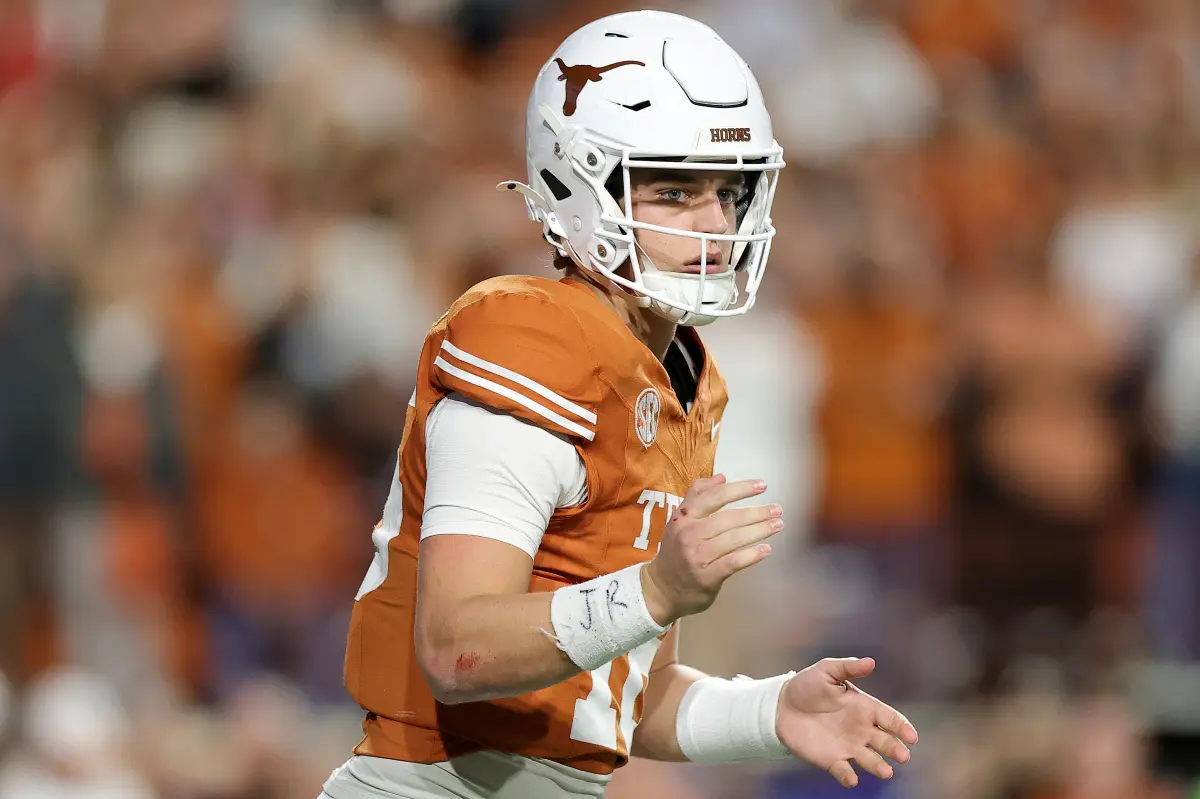
Arch Manning is taking a pay cut.
The Texas quarterback agreed to take a reduced share of the team’s revenue-sharing pool “as part of an effort to help the Longhorn football program do whatever it takes to support a 2026 championship run,” according to On3’s Justin Wells.
The savings “could be used on transfer portal talent or as part of retention efforts” for the Longhorns, per Wells.
This season, athletic programs were capped at $20.5 million in revenue-sharing, although that number is likely to increase next season and beyond.

Manning, the nephew of NFL icons Peyton and Eli Manning and the grandson of legendary quarterback Archie, is one of the most marketable athletes in college sports.
On3 currently gives Manning an NIL valuation of $5.3 million, which leads all student-athletes.
Although he is getting less money from Texas, Manning still holds NIL deals with brands like Red Bull, Uber and EA Sports, among others.
However, Manning sometimes struggled in a season that started with Heisman hype and the Longhorns ranked No. 1 in the nation.
Texas finished the season 9-3 and out of the College Football Playoff, a disappointing midseason loss against a poor Florida team all but ended their chances of being in the 12-team field.
Manning’s season was underwhelming as well, throwing for 2,942 yards with 24 touchdowns and seven interceptions.
The news comes after Manning’s father, Cooper Manning, told ESPN earlier this week that his son would return to the Longhorns in 2026 for his junior season despite previously mulling entering the 2026 NFL Draft.
“Arch is playing football at Texas next year,” Cooper said.
Texas finished No. 13 in the end of season rankings and will be on the sidelines for the College Football Playoff, which kicks off on Friday.
Defensive tackle Keanu Tanuvasa and offensive tackle Andrew Gentry made the biggest splashes in the offseason when they transferred to BYU from Utah and Michigan, respectively, but perhaps the greatest contribution from a transfer not named Bear Bachmeier was made by tight end Carsen Ryan in 2025.
The former American Fork and Timpview star, who began his college career at UCLA before transferring to Utah in 2024 and then BYU in 2025, filled a huge hole at the tight end position and was a big reason why the Cougars’ offense performed so well against all of its opponents except Texas Tech this season.
“Carsen has been everything we expected him to be,” offensive coordinator Aaron Roderick said a few weeks ago. “He’s been great.”
Of course, the 6-foot-4, 250-pound Ryan will get at least one more chance to do his thing when the No. 12 Cougars (11-2) meet No. 22 Georgia Tech (9-3) in the Pop-Tarts Bowl on Dec. 27 at Camping World Stadium in Orlando, Florida. While some seniors and juniors seemingly headed to the NFL are opting out of bowl games, Ryan said the thought has never crossed his mind.
“I am not in the position to do that, but even if I was, I feel like I would still want to play in this game,” he told the Deseret News on Wednesday. “You never know. Any game could be your last game playing football.
“You are never going to experience playing college football again, most likely. … It’s been such a special time for me in my life. I would be upset with myself if I didn’t play in this game and give myself one more chance to have one more game with my brothers and have fun.”
— BYU tight end Carsen Ryan
“You are never going to experience playing college football again, most likely,” he continued. “I’m never gonna experience that again. It’s been such a special time for me in my life. I would be upset with myself if I didn’t play in this game and give myself one more chance to have one more game with my brothers and have fun.”
Ryan is listed as a redshirt senior on BYU’s roster, but the truth is he is just a senior and has played only four years of college football. Because he played in only five games at UCLA his freshman year (2022) before sustaining a season-ending injury, he has applied for a waiver with the NCAA to get that year of eligibility back.
But he’s not holding his breath, having heard through various channels that the waiver is not likely to be granted.
“I have applied, but I am treating this season like I am training to go full-go to the (NFL) right now.
“That’s the goal right now,” he said. “I don’t know what the outcome of that’s going to be. I haven’t heard a lot of good news about it. I am treating everything like I am going to the league next year.”
Ryan has selected agent Carter Chow — Norm Chow’s son — of Red Envelope Sports to represent him in NIL and NFL draft negotiations and would like nothing more than to put up another outstanding game in Orlando next week.
While some college players have language in their NIL contracts with schools that stipulate they must play in bowl games, Ryan said his contract does not include that. Not that it would matter.
“I have been at places where that is in the (NIL) contract,” he said. “I haven’t heard about that being a thing here at BYU. However, I don’t have any negative thoughts about playing in the bowl game, either. I’m really looking forward to it.”
Ryan said that sentiment applies to all of his teammates; as of Friday, it appeared that BYU would have no bowl game opt-outs, aside from the handful of backups who have announced their intentions to enter the transfer portal when it opens on Jan. 2.
“Everyone is excited, still. We still bring the same energy, same intensity to practice,” he said. “It is not a vacation or a week off for us. It is another serious game that we want to go out there and win.”
Ryan said getting a victory against the ACC foe won’t be easy. Georgia Tech is coming off a close loss — 16-9 — to No. 3 Georgia in Atlanta and has the ACC’s Quarterback of the Year, Haynes King.
“They are a good team. They are good defensively. They have a lot of really good players on that team. They all work together. Everyone does their job. So it’s gonna be a tough game,” he said. “They only lost three games this year, and those losses were to really good teams (North Carolina State, Pitt and Georgia).”
Meanwhile, Ryan turned out to be just what the doctor ordered for BYU, after tight ends Keanu Hill (12), Mata’ava Ta’ase (9) and Ryner Swanson (10) combined for just 31 catches in 2024, for 290 yards.
Ryan is BYU’s third-leading pass-catcher, with 37 receptions for 500 yards and three touchdowns. He’s often wondered what might have been if he had considered BYU two years ago when he was leaving UCLA.
“I have loved it here. Every second I have been here has been fun,” he said. “There have been ups and downs. With football, it has been a good year for me, and the relationships I’ve made with the coaches and players will last forever.
“I wish I could have had more time at this place. I wish I got here sooner,” he continued. “But everything happened for a reason, and I’m grateful for my journey and how I’ve gotten here, and that Kalani and his staff found a place for me here.”
Part of that journey included meeting his fiancee, Jayne Basso, at UCLA. She is finishing up her degree at UCLA this winter. The couple plans to wed in June.
“We are excited to start this whole new chapter of our lives together,” Ryan said.


SoundGear Named Entitlement Sponsor of Spears CARS Tour Southwest Opener


Bowl Projections: ESPN predicts 12-team College Football Playoff bracket, full bowl slate after Week 14


Donny Schatz finds new home for 2026, inks full-time deal with CJB Motorsports – InForum


How Donald Trump became FIFA’s ‘soccer president’ long before World Cup draw
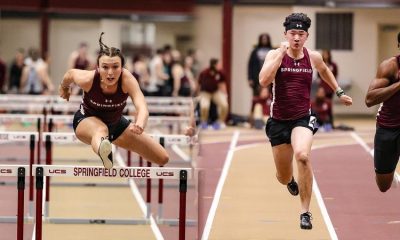

Men’s and Women’s Track and Field Release 2026 Indoor Schedule with Opener Slated for December 6 at Home


Black Bear Revises Recording Policies After Rulebook Language Surfaces via Lever


Michael Jordan’s fight against NASCAR heads to court, could shake up motorsports


David Blitzer, Harris Blitzer Sports & Entertainment


JR Motorsports Confirms Death Of NASCAR Veteran Michael Annett At Age 39
Second-Screen Golf Experiences : Player Profiles